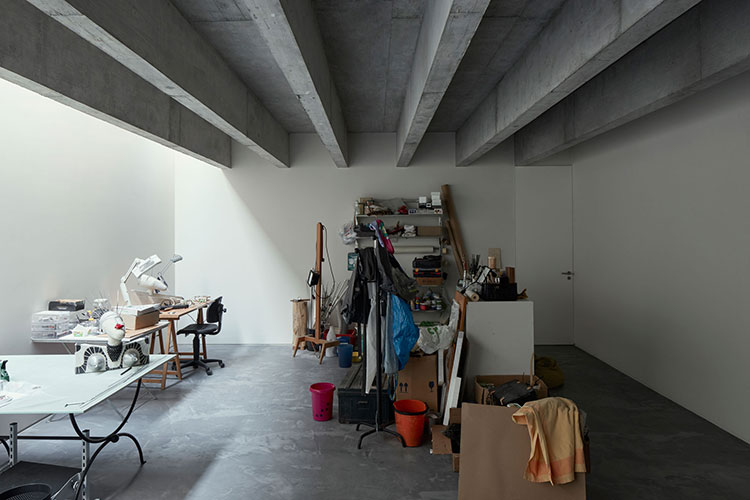Portuguese architecture firm Extrastudio has recently designed House for an Artist, a dual purpose project that combines the aesthetic value of an artist studio with the functionality of a family home.
“Our clients, an artist who works with ceramics and mosaics and a retired musician who once toured with B.B. King, chose to build their new home in Alto da Ajuda, a working-class neighborhood built in the 1930’s,” explains Extrastudio.

Despite its proximity to the center of Lisbon, the area retains a certain village atmosphere, with small plots of two-story houses with gardens oriented towards the river.
Although local planning restrictions dictated the exterior form and appearance of the house, this was architects second attempt to create overlapping spatial experiences within a regular envelope, giving the dwellers a sequence of unexpected spaces.

The basement accommodates the artist’s studio, a raw space with a high-ceiling and 10m-long roof light, which provides constant light throughout the day. Adjoining it is a hidden space, a music room with a window into the swimming pool.

The ground floor is a perfect square, 10x10m, a generous space with large windows opening in three directions. All social areas are seamlessly organized in this space, providing a lively and generous atmosphere. The floor is slightly sunken into the ground, creating an unusual scale in the interior and transforming the window sills into benches.
Three bedrooms are arranged in a traditional layout on the first floor. On the floor above, beneath the pitched roof, is a loft with magnificent views of the river and sea.

The palette of materials selected – sanded aluminum floors, a variety of woods, lacquers, concrete and a range of pigmented colored stuccos specially produced for the project – were intended to heighten the differences between each floor. Construction started after Portugal’s application for a bailout from the IMF and like other contemporaneous projects, any superficial elements were removed, leaving a stark, elemental architecture.
Bought in the early days of construction, the swimming pool’s marble serves as the memory of other possibilities, transforming the music-room into a magical place.





all images © Hugo Santos Silva






